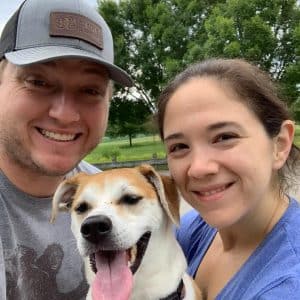Kevin Lavender, DO, PGY2
Riverside Family Medicine Residency
“Financial Fitness for Residents”
As Michael Scott stated in The Office, “Mo’ money, Mo’ problems.” Obviously stating, “I declare bankruptcy!” does not make your money problems go away. With our current student loan debt and limited learning during medical school and residency, it is crucial we learn how to manage our money. Personal finance is just that, personal. So the advice given here is for educational and entertainment purposes. If you have further questions please seek professional advice.
Student Loans
Most medical students and residents finish academic medicine woefully underprepared to tackle debt. Whether that is having a plan of action or just ignoring it. Most family physicians will have two options to tackle their student debt: either using the Public Service Loan Forgiveness (PSLF) program or paying them outright. The PSLF program is for those who have federal debt, in an income-driven repayment plan, and make 120 monthly payments while employed by a non-profit (503c). Paying them off outright is another option that requires careful planning and a desire to eliminate debt as soon as possible. Each person must decide what is best for them and their situation. Do not forget that most states offer other repayment options and forgiveness. Google “physician loan forgiveness” for the state you are in. There are also the National Health Service Corps (NHSC) and Armed forces. The more you Google, the more you will find. If you intend to pay them off outright, then you will need a BUDGET!
Budget
If you are like me, my parents tried really hard at this. But then I got my first paycheck and, oh boy, did that go fast. In high school, I decided it would be brilliant to spend my hard-earned summer job money on a $1200 kayak and $700 golf clubs. Now, these did bring me pleasure, but now just wonder what my Roth IRA would be worth… As for medical students and residents, building a strong and emotionally healthy relationship with money is crucial to paying off loans. We learn how to live on a budget during residency. The best advice to give is follow your pennies and dimes. Start tracking your spending and monitor closely. If you have a significant other you share an account with, have a financial date once a month. There are plenty of apps out there like Mint and YNAB. Personally, I just use an Excel sheet. I borrow my wife’s phone a couple times a month to plug in the expenses. Then I promptly find out that I have an addiction to coffee and should have put more money into my Roth IRA.
Retirement
Trading stocks and becoming an investor has become more accessible since apps on our phones let us trade without commissions. We all heard about GameStop, Bitcoin, AMC, and started experiencing FOMO (fear of missing out). We wanted to put money into these stocks and watch our money grow. Who can argue with that? Well, I will. For those that might not have researched capital gain taxes and taxable accounts, they might have paid more money than they gained. I would argue that ALL residents should max out their Roth IRAs first. A Roth IRA is a tax free account, meaning you put a part of your take-home pay into the account. Now there are stipulations to contribute to this account. If you are married and making <196,000 you are able to contribute $6,000 a year. If you are single and making <125,000 you can contribute $6,000 as well. Most residents are below these thresholds and should have the goal to max out the Roth IRA for 3 years. If anything is left over after maxing out the Roth IRA and in your budget, then have some fun day-trading, but make sure you DO NOT need the money first.
Finally, and the most important piece of advice. Live like a resident until all loans, except for mortgage, are paid off.
Resources
Books:
Podcasts/Blogs:

